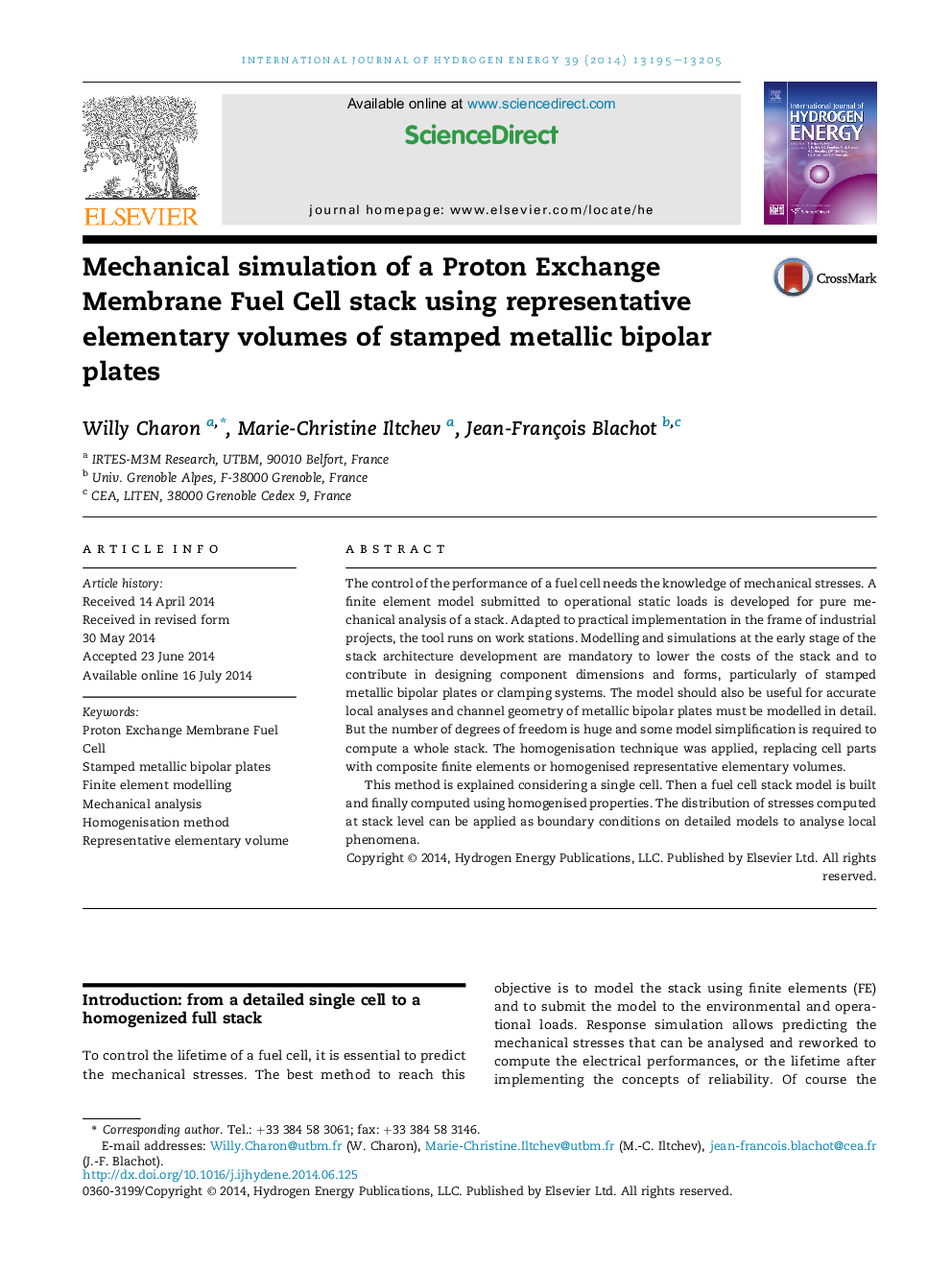| Article ID | Journal | Published Year | Pages | File Type |
|---|---|---|---|---|
| 1272607 | International Journal of Hydrogen Energy | 2014 | 11 Pages |
•We show the need of a homogenized model for analysing a full stack mechanical behaviour.•We develop a mechanical model of a single fuel cell.•We show how to apply the concept of representative elementary volume to metallic bipolar plates.•The model is extended to a full stack.•We show how to obtain local results from a global analyse.
The control of the performance of a fuel cell needs the knowledge of mechanical stresses. A finite element model submitted to operational static loads is developed for pure mechanical analysis of a stack. Adapted to practical implementation in the frame of industrial projects, the tool runs on work stations. Modelling and simulations at the early stage of the stack architecture development are mandatory to lower the costs of the stack and to contribute in designing component dimensions and forms, particularly of stamped metallic bipolar plates or clamping systems. The model should also be useful for accurate local analyses and channel geometry of metallic bipolar plates must be modelled in detail. But the number of degrees of freedom is huge and some model simplification is required to compute a whole stack. The homogenisation technique was applied, replacing cell parts with composite finite elements or homogenised representative elementary volumes.This method is explained considering a single cell. Then a fuel cell stack model is built and finally computed using homogenised properties. The distribution of stresses computed at stack level can be applied as boundary conditions on detailed models to analyse local phenomena.
